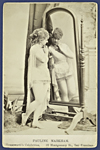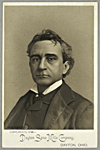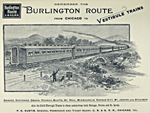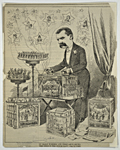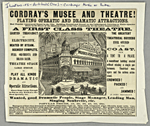The Gold Rush, Railroads, and the Theater Boom
"[In the 1860s, Virginia City] was growing with remarkable strides… The known prodigality of this great mining town, with its easy money, was a lode stone which drew theatrical companies great and small.…" — Mrs. Sam P. Davis, "Early Theatrical Attractions in Carson," Nevada State Historical Society Papers 4 (1924)
As Americans and immigrants prepared to travel West, trading
centers were established at cities on the Mississippi, Ohio, and
Missouri rivers, where settlers could stock up on provisions for
their journeys. As travelers, and cash, poured into St. Louis,
Dayton, Pittsburgh, and Chicago, construction began on hotels and
theaters.
The westward progression of settlement might have continued to
follow the rivers and trails for many decades but for the
discovery of gold in California in 1848. That gold rush, and lode
discoveries in Colorado, Mexico, and Nevada, brought thousands to
the West Coast by sea through (or around) Central America. Urban
centers were established quickly, and opera houses
were built before streets. At first, house managers in the
new mining and trading cities, such as Virginia City, Nevada;
Niles, Michigan; and Boscobel, Wisconsin, imported supplies from
San Francisco or Chicago, but soon they developed their own
support industries -- from printers and poster pasters to curtain
and seat upholsterers.
The third impetus in theater construction came with the
transcontinental and regional railways. Producer J. H. Haverly,
who managed theaters in New York, Chicago, and San Francisco,
realizing that he could save money by basing his tours on the
railroad map, transported his theatrical companies by rail to
regular seasons in the larger cities, such as New York, Boston,
Pittsburgh, Chicago, and San Francisco, and to smaller cities
along the way.
Refer to Map of the United
States and Mexico (1859), which
details explorers' trails, transportation routes,
settlement patterns, and locations of mineral wealth.
These factors greatly affected tours undertaken by
performing artists in America during the first half of
the 19th century.

